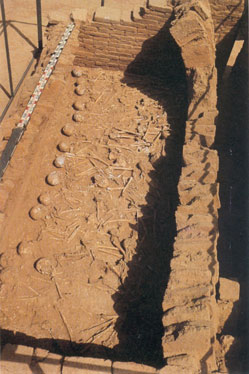| Modified: |
|||||
| Archaeological Research at Haft Tappeh | |||||
| Geographical Situation | History of Research | Historic Overview | Current Project | Bibliography | Deutsch | |||||||||||||||||||
 |
||||||||||||||||||||||||
| Historic Overview
During the excavations of E. Negahban several tablet and stone inscriptions were found that gave important information on this antique city (P. Herrero, 1976; P. Herrero/J.J. Glassner, 1990, 1991, 1993 and 1996; E. Reiner, 1973). On one of these tablets the seal of Athibu, Governor of Kabnak was found (P. Herrero, 1976, 102). Due to this discovery the scientists supposed that today’s Haft Tappeh is identical with the antique Kabnak. The inscriptions indicate that large monuments stem from the middle Elamite period. Especially Tepti-Ahar, an Elamite King of this period is mentioned in many texts. It is therefore generally supposed that most of the monuments were constructed in his reign. During the recent excavations carried by Mofidi-Nasrabadi, it was possible to determine the eldest building level at Haft Tappeh, which belongs to the beginning of the second millennium B.C. It seems likely that Haft Tappeh was destroyed at the end of the first phase of the middle Elamite period and has then lost any influence in this area. Much later in the Parthian period traces of settlement can be found again. This settled area must have been restricted to the western parts of the once Elamite city area as pottery findings are concentrated on those parts. |
||||||||||||||||||||||||
| The Grave II in Haft Tappeh | ||||||||||||||||||||||||
 |
||||||||||||||||||||||||
| Back to Home | ||||||||||||||||||||||||
|
(C) 2004 B. Mofidi-Nasrabadi
|
||||||||||||||||||||||||
| Terracotta Figurine from Haft Tappeh | ||||||||||||||||||||||||